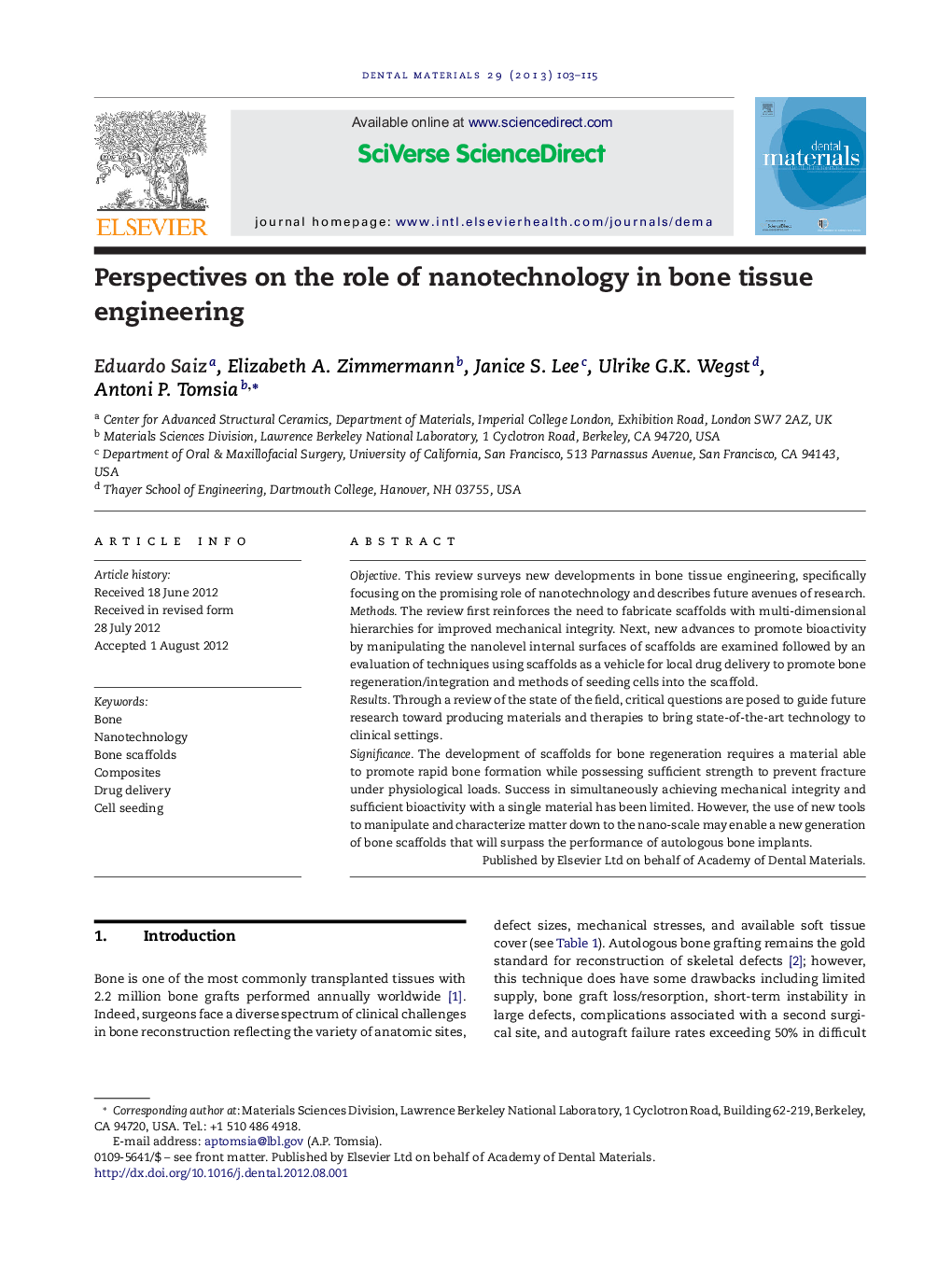| Article ID | Journal | Published Year | Pages | File Type |
|---|---|---|---|---|
| 1421551 | Dental Materials | 2013 | 13 Pages |
ObjectiveThis review surveys new developments in bone tissue engineering, specifically focusing on the promising role of nanotechnology and describes future avenues of research.MethodsThe review first reinforces the need to fabricate scaffolds with multi-dimensional hierarchies for improved mechanical integrity. Next, new advances to promote bioactivity by manipulating the nanolevel internal surfaces of scaffolds are examined followed by an evaluation of techniques using scaffolds as a vehicle for local drug delivery to promote bone regeneration/integration and methods of seeding cells into the scaffold.ResultsThrough a review of the state of the field, critical questions are posed to guide future research toward producing materials and therapies to bring state-of-the-art technology to clinical settings.SignificanceThe development of scaffolds for bone regeneration requires a material able to promote rapid bone formation while possessing sufficient strength to prevent fracture under physiological loads. Success in simultaneously achieving mechanical integrity and sufficient bioactivity with a single material has been limited. However, the use of new tools to manipulate and characterize matter down to the nano-scale may enable a new generation of bone scaffolds that will surpass the performance of autologous bone implants.
